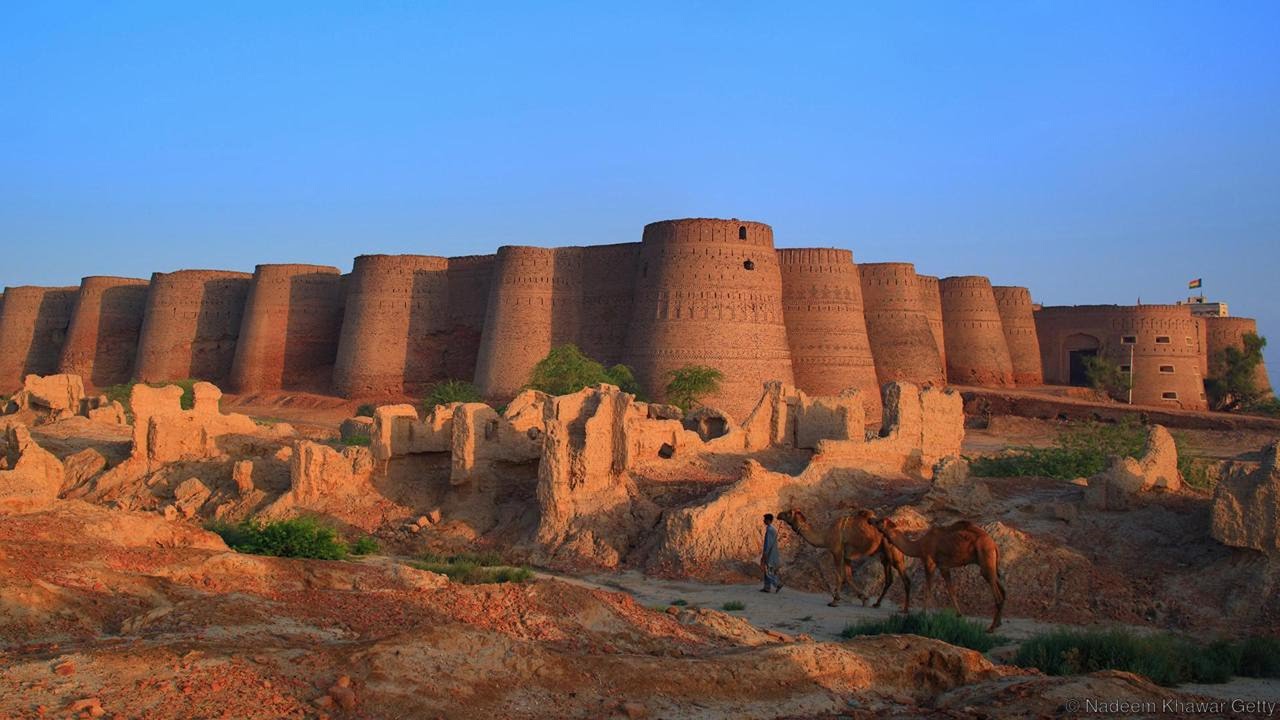World Tourism Day: 5 Pakistani places you must visit this autumn

It's a country where you can find all four seasons all twelve months
(Web Desk) – It’s September 27 and it’s World Tourism Day. Pakistan’s image remained tarnished due to the terrorism the country faced during the last decade but as things have improved tremendously during the last three or four years, bringing the threat of terrorism to minimum, the tourism industry in the country has begun to flourish once again.
So this autumn, you must visit some places in this country that will take you back in time at times and at other times might mesmerise you with their natural beauty.
Let’s start with Balochistan
Hanna Lake, Urak Valley
Urak Valley is just 21 kilometres from Quetta city and is one of the busiest tourist attractions in the whole of the province along with Chamman Valley and of course the newest sensation, Gwadar. Hanna Lake is the most striking part of the valley surrounded by dazzling green mountains and forests of apple trees. The lake has an abundance of Golden fish, a rarity in Pakistan and the restaurants/picnic places in the area certainly help visitors find good things to eat and have some space to rest as well.
Rowing in the lake is also fun and the place is not only secure but clean too, courtesy Pakistan army which takes care of the place in its trademark professional manner.

Ranikot Fort
Ranikot Fort is claimed by many to be the ‘largest fort on earth’. It is located in the Jamshoro district of Sindh and ‘is probably the most talismanic wonder of Sindh’. The reason behind naming it as Ranikot is not that some Rani or queen lived here – of course they did – but because of a rain stream that flows through it. So Ranikot actually means the ‘fort of the rain stream’.
Although not looked after well enough, this historical place is known as the Great Wall of Pakistan. The historians seem completely baffled over the location of the fort as they believe that there doesn’t seem to be a reason good enough for building this fort at this place. “The size of Ranikot defies all reasons. It stands in the middle of nowhere defending nothing”, writes Isobel Shaw.

Ranikot Fort

Great Wall of Sindh
Derawar Fort
It was Dear Rawal fort initially, named after the 9th century ruler of Rajasthan (India) Rawal Deoraj Bhatti. The strong Rajput clans ruled the region up to the 18th century when finally they lost this fort to the Nawabs of Bahawalpur. It is one of the most striking places in the whole of subcontinent as a 1200-year-old fortress still stands tall in the middle of the desert. It was renovated by the Abbasis of Bahawalpur and during the digging up, catapult shells as old as a thousand years were found in the rubble.

Neelum Valley
Ok, enough of the forts already. Are you a fan of high mountains and green valleys and flowing rivers with cool breeze blowing around you with a chance of rain every few hours and even some snowfall if weather takes a sudden turn in autumn? This is still not as rosy a picture as the place actually is. Neelum Valley is one of the most beautiful places probably on the entire earth. The Azad Kashmir valley through which the Neelum River also flows is some 13,000 feet from the sea level.

The valley is connected with Muzaffarabad, Azad Kashmir’s capital, with Neelum Road and is literally dazzling in its beauty. The best part is that it is easily accessible due to the Neelum Road and you can find regular buses going there from Muzaffarabad. There are famous villages like Kel, Kundal Shahi, Keran, Sharda etc and you may also visit the beautiful Chitta Katha, Shounter, Ratti Gali and Saral lakes while there. Horses and jeeps are easily available for reaching the remote areas of the valley.
Chitral
Chitral is one of the most beautiful places in the entire country. The town is in the far north of Pakistan, adjacent to Gilgit-Baltistan in the east and in the west it shares a long border with Afghanistan. At an elevation of 4977 feet from the sea-level, Chitral is not only a place with breathtaking landscape but also home to a rich history and culture. It is also the homeland of the smallest religious and ethnic minority of Pakistan, the Kalasha people, who are known for their colourful dresses and the annual festival that is held in the valley.

Shahi Mosque
The Shahi Quila and the Shahi Mosque are two of the most favourite tourist attractions in the district while Chitral Fort is yet another enthralling site to visit. Chitral is also famous for the famous players it produced for Pakistan’s Polo team. The Shandoor Polo Festival is organised each year in the summer season in Shandur (Gilgit-Baltistan) and the Chitral and GB teams play festival matches on the occasion.

